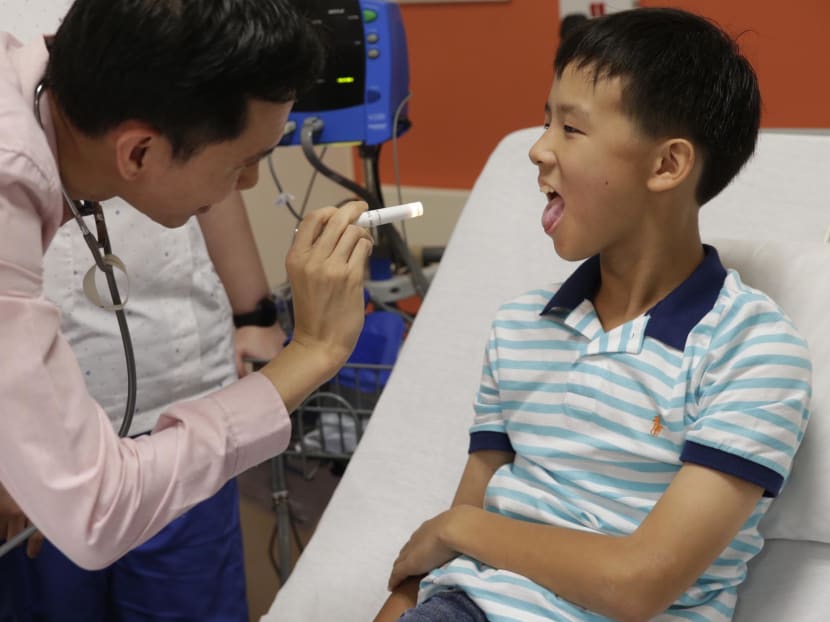The answer to a nut allergy may be to eat more nuts
SINGAPORE — Whenever Tng Shih Kai was at a party, he would watch his friends tuck happily into peanut snacks and he would feel left out: He could not eat them due to his allergies, and he first suffered symptoms when he was a mere toddler. But since his father put him on a programme at the National University Hospital (NUH) in January last year, Shih Kai has been working to fight his allergy one peanut at a time.
SINGAPORE — Whenever Tng Shih Kai was at a party, he would watch his friends tuck happily into peanut snacks and he would feel left out: He could not eat them due to his allergies, and he first suffered symptoms when he was a mere toddler. But since his father put him on a programme at the National University Hospital (NUH) in January last year, Shih Kai has been working to fight his allergy one peanut at a time.
When he joined, he was first fed less than 200mg of peanut flour — or less than one peanut — and after 10 months, the 13-year-old is now able to eat about 12 to 15 peanuts a day.
The Food Oral Immunotherapy programme for children started at the NUH in August 2015.
Led by Dr Soh Jian Yi, consultant from the paediatric allergy, immunology and rheumatology division, it attempts to raise the threshold of the allergic reaction: The minimum amount of allergen that a child must consume before having an adverse reaction.
The programme is being expanded in the first half of this year to include managing allergies linked to eggs and tree nuts such as cashews.
Shih Kai’s father, Tng Yan Hui, recounted one of his son’s allergic reactions: “Once, at the school canteen, (a stall) operator used the same knife to spread kaya (coconut jam) as well as peanut butter.” After the meal, Shih Kai experienced rashes around the mouth, swollen lips, nausea and dizziness. Mr Tng signed his son up for the NUH programme after a friend told him about it.
Under supervision in hospital, the child is given a first dose of the allergen, which is an amount below the threshold, and placed under observation for two hours. The child is then discharged and takes the exact same dose daily under parental supervision.
When increasing the dose, the child must visit the hospital. This may be once in two weeks or less, with two hours of observation on each visit.
The treatment may last a few months to a year, depending on the final target threshold, and the cost ranges from S$5,000 to S$9,000. At the end of the programme, the child still has to take the allergen in any form at least twice a week.
One of the most common concerns of parents is whether taking the allergen would endanger the child’s life, especially if he or she already has a severe reaction to it.
However, Dr Soh said that the ones with the most severe reaction would arguably benefit the most from the programme. No matter how severe the reaction, a child who has a threshold of taking 1/200th of a peanut, for example, could raise that threshold to 10, 20 or more peanuts, he added.







